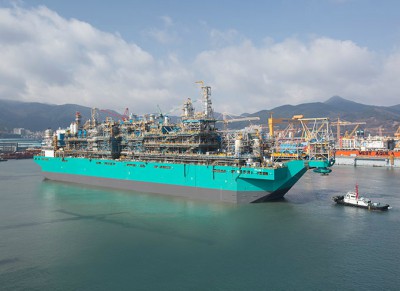Honeywell technology scrubs natgas on world's first FLNG vessel
DES PLAINES, Ill. — Honeywell announced that PETRONAS' floating liquefied natural gas (FLNG) facility—the first of its kind in the world—is using Honeywell UOP's Amine Guard FS technology, specially adapted for marine applications. The custom-built vessel, called PFLNG SATU, liquefies, stores and offloads LNG. The Amine Guard FS unit is used to remove carbon dioxide (CO2) from natural gas to prevent freezing as the gas is cooled to a liquid.
 |
| Photo courtesy of Petronas. |
This is the first application of the Amine Guard FS technology on an FLNG facility. Honeywell UOP adapted the technology to compensate for vessel motion, thereby ensuring that the system can efficiently remove carbon dioxide from natural gas during all anticipated ocean conditions.
This Amine Guard FS solution provides higher uptime and throughput compared to amine systems that are not designed to operate in rough seas. Honeywell UOP's solution also lowers operating costs and covers a smaller footprint with lower weight. Honeywell UOP provided a process guarantee, on-site commissioning, and on-going service for the marine Amine Guard FS system.
The PFLNG SATU facility will play a significant role in PETRONAS' efforts to unlock gas reserves in remote and stranded fields which was once deemed uneconomical to develop and produce. With a crew of 145 people, PFLNG SATU is the first such facility to start operations in the world. It operates in shallow water depths of between 70 m and 200 m, with a processing capacity of 1.2 MMtpy.
In August, PETRONAS reported that its FLNG has been delivering cargoes since it was commissioned in April, including deliveries to buyers in the Far East. This demonstrates UOP's ability to adapt a conventional land-based installation to a floating LNG facility.

- ExxonMobil halts 1-Bft3d blue hydrogen project in Texas
- Aramco and Yokogawa commission multiple autonomous control AI agents at Fadhili gas plant
- Ukraine will resume gas imports via Transbalkan route in November
- Mitsubishi to inject $260 MM into Brunei LNG project
- Freeport LNG (U.S.) on track to take in more natgas on Thursday after unit outage



Comments